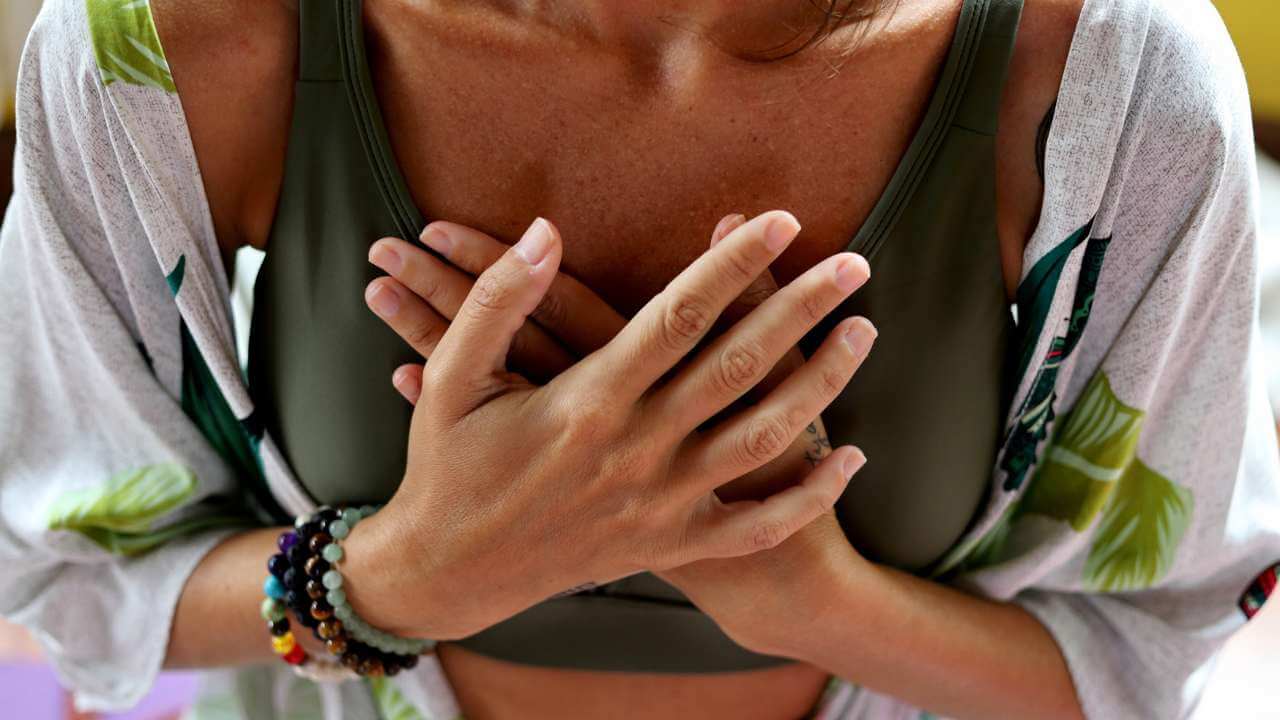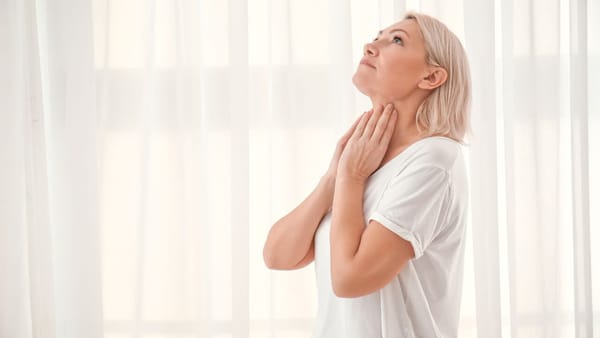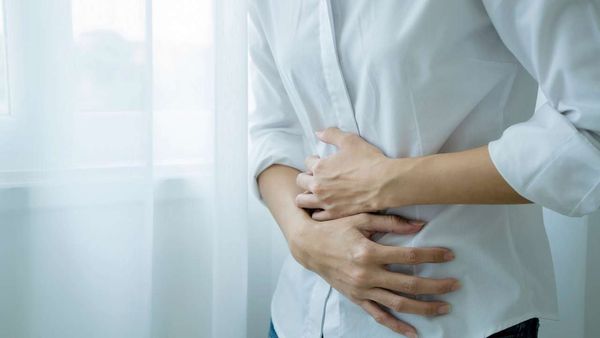Struggling with chest acne and want to get rid of it?
Look no further - Our Definitive Guide to Clear Skin has the answers! We’ll show you step-by-step how to identify, treat, and prevent even the worst cases of chest acne.
From popular skincare remedies that work quickly, to lifestyle changes that offer long-term effects--we cover all angles in our comprehensive guide!
Finally, say goodbye to redness and irritation from those stubborn chest acne breakouts. With just a few easy steps you can have clear skin for good!
So no more worrying about how to get rid of chest acne -read on for all the answers!
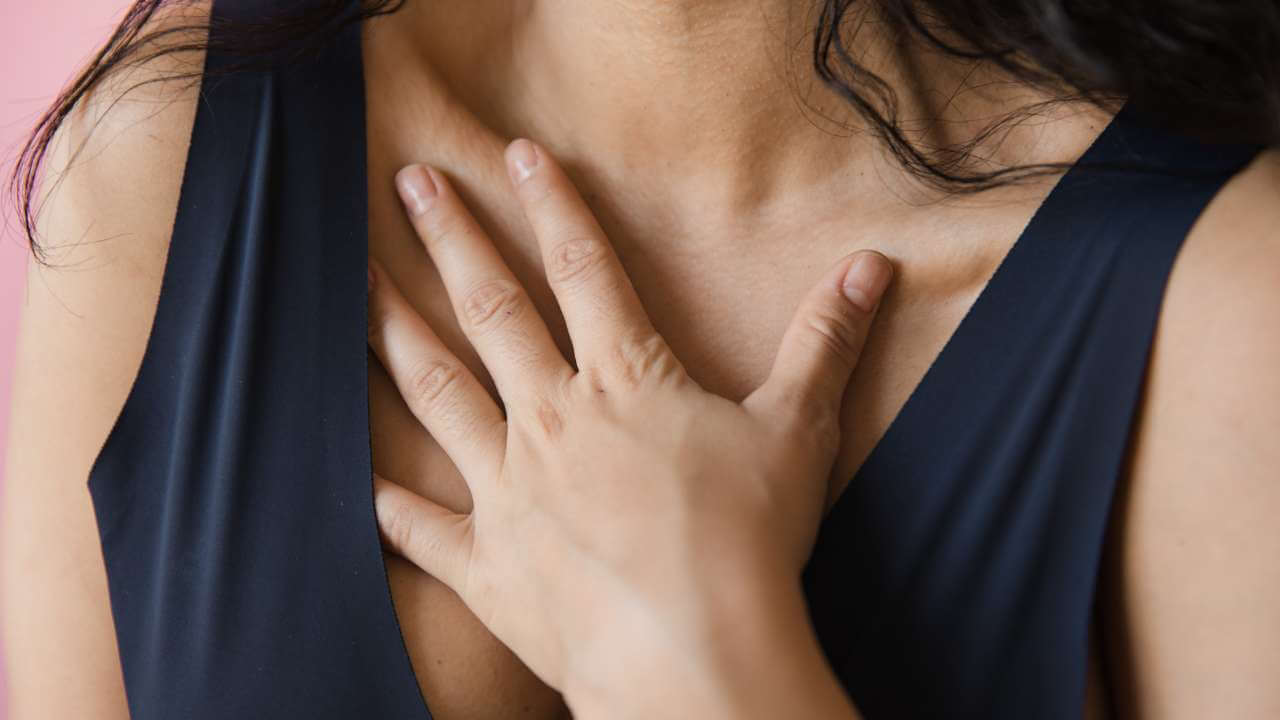
What is Chest Acne?
Acne blemishes are not exclusive to faces, but can frequently appear on the chest. Though there are many potential causes for this type of acne, you may be able to reduce or even prevent your symptoms with some simple lifestyle changes that help avoid triggering factors.
Chest acne is caused by dead skin cells, bacteria, and excess oil that clog pores. As the dead skin cells accumulate in the chest area, they cause a blockage in the pore and result in chest acne breakouts.
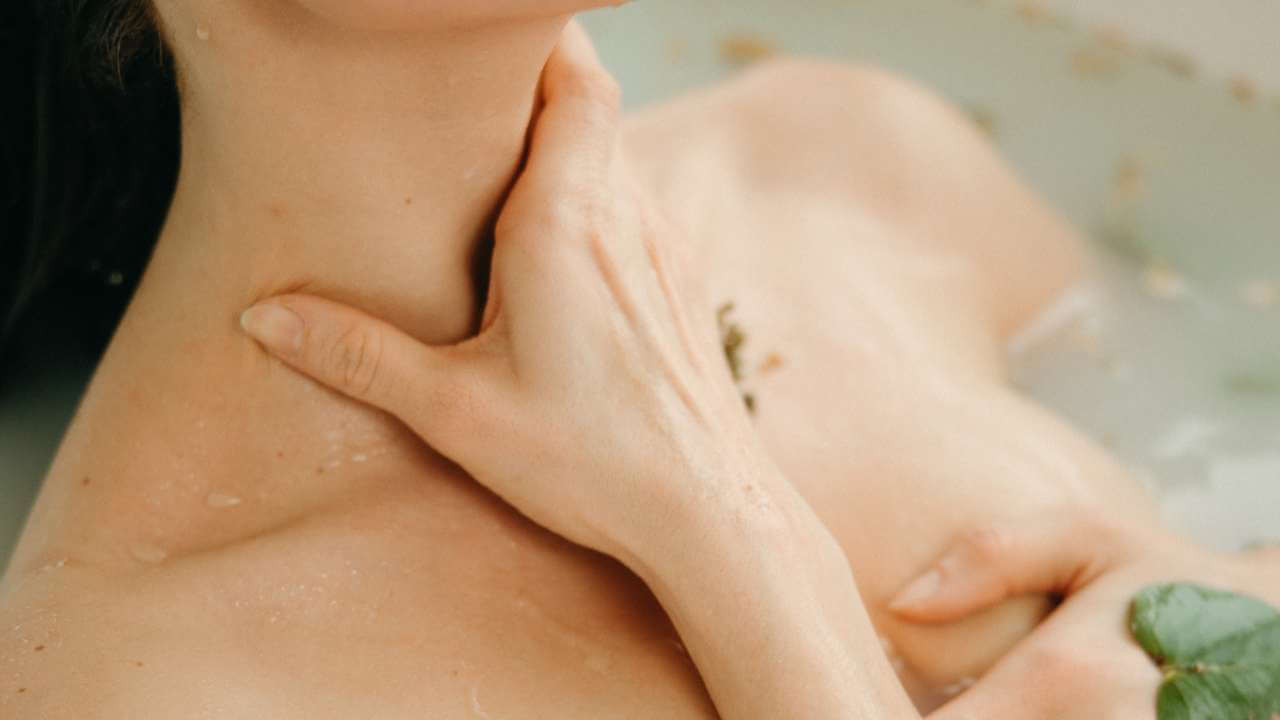
How to Get Rid of Chest Acne?
Do you feel like your chest has been taken over by an army of angry, red pimples?
Don't worry - we've all been there. But the good news is that it doesn’t have to stay that way! With a few simple but effective acne self-care strategies, you can banish those pesky zits and let your skin shine through again.
So if you want to kiss chest acne goodbye for good, read on as we share our top tips for getting rid of this common issue once and for all.
1) Post Workout Shower
To avoid any skin issues like chest acne, it's important to shower as soon as possible after your workout routine. Sweat that clings to the skin can cause pores to become blocked and may lead to body breakouts - but with a quick rinse using an antibacterial body wash or soap, you'll help get rid of bacteria, keeping your skin clear!
2) Use a Topical Treatment like a Benzoyl Peroxide Cleanser
If you want to keep those pesky acne-causing bacteria at bay, add an emollient foam wash to your daily bathing ritual. Using an acne body wash with benzoyl peroxide can help unclog the pores on your chest, eliminating any possibility of chest acne or flare-ups.
Once you've taken a shower and grabbed your scrub brush, apply this special cleansing solution before giving your chest an invigorating rub down - trust us; you'll be pleased with the results!(1)
3) Use a Body Wash With Salicylic Acid
Body washes containing salicylic acid are a must-have for anyone who suffers from chest acne.(2) Salicylic acid is an effective and potent ingredient that dries out pimples, making it the perfect solution to treat breakouts on your chest or back.
If you’re looking for the best way to keep chest acne at bay, then check out our review of the best acne body washes! We’ll help you find the right product for your skin type.
4) Opt for a Non-Comedogenic Body Lotion
To put it simply, "non-comedogenic" means non-pore clogging. This is essential to take into account when selecting products that sit on your skin all day or night, like body lotion.
Utilizing a non-comedogenic body lotion will moisturize the chest with no fear of breakouts developing.(3)
Some formulations even contain small amounts of salicylic acid to help prevent blemishes from reoccurring.
5) Exfoliate Regularly
Exfoliation helps to remove dead skin cells and dirt that can accumulate on the chest and can further lead to clogged pores.
Your skin is constantly changing and adapting, regenerating new cells as old ones are shed. However, these dead skin cells will sometimes remain in your pores and block them up if they aren't removed properly - which often leads to acne flare-ups.
To ensure that the process of renewal happens smoothly and effectively, it's important to incorporate a regular exfoliation regimen into your skincare routine.
By exfoliating your skin no more than once a week, you will be able to experience silky smoothness. However, over-exfoliation can aggravate existing pimples and blemishes.
6) Target Acne with Spot Treatments
Take action against chest acne before it gets worse, and only address specific pimples if you just have a few. For the most effective skincare treatment, choose one that contains sulfur, camphor, salicylic acid, and tea tree oil – all of which are established to reduce swelling connected with breakouts.
7) Hydrate
Water is essential for having healthy skin, including your back. By drinking plenty of water you can flush out impurities and toxins that may worsen acne while simultaneously providing the necessary moisture to keep the skin nourished and supple.(4) In addition, this will aid in reducing inflammation brought about by an existing breakout or acne scar – promoting healing as a result.
8) Wear Breathable Clothing
Excessive sweating can lead to chest acne or worsen existing acne breakouts. To avoid excessive sweating, you should wear clothes made of natural fabrics like cotton, linen, or silk that allow your skin to breathe. This helps to reduce heat and perspiration around hair follicles, preventing bacteria from forming.
Make sure you keep your clothes clean by washing them regularly and do not reuse sweaty clothes.
And always make sure to consult with a board-certified dermatologist before beginning any skincare regime.
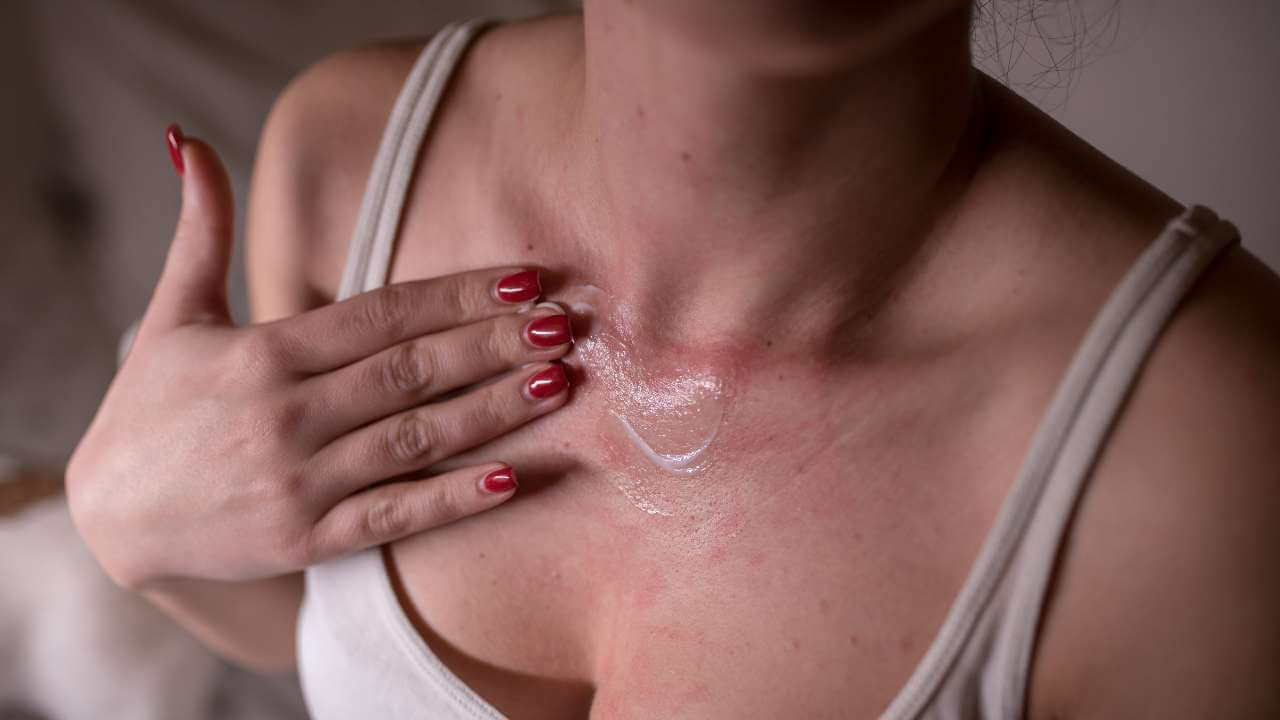
Causes of Chest Acne
Chest acne or any form of body acne is caused when pores on your skin become clogged with sweat, debris, and excess sebum. Acne occurs wherever your skin contains oil glands, including your face, chest, stomach, and back.
Your body naturally produces this oil to maintain healthy hair and skin, but too much of it can result in blocked pores.
There are several possible causes behind pimples showing up on the chest including:
- Hereditary- If you come from a family with acne-prone skin, the chances of developing chest acne are significantly increased.
- Tight Clothing- Wearing tight, restrictive clothing against sweaty skin can worsen existing breakouts due to the friction it causes.
- Hormonal Changes- During pregnancy and puberty, the drastic hormonal fluctuations in a woman's body can be an unfortunate cause of increased acne. (5) Teenagers are especially susceptible to this side effect as their hormones rapidly change.
- Medications- Medications such as corticosteroids may be responsible for exacerbating chest acne.(6)
- Stress and Anxiety- Anxiety and stress can have a major impact on our skin, often leading to the production of cortisol - a hormone that increases sebum output.(7) When this occurs, there is an excess amount of sebum is released which leads to the buildup of dead skin cells in your pores. Ultimately, chest acne breakouts are caused by this clogging effect due to overactive cortisol levels.
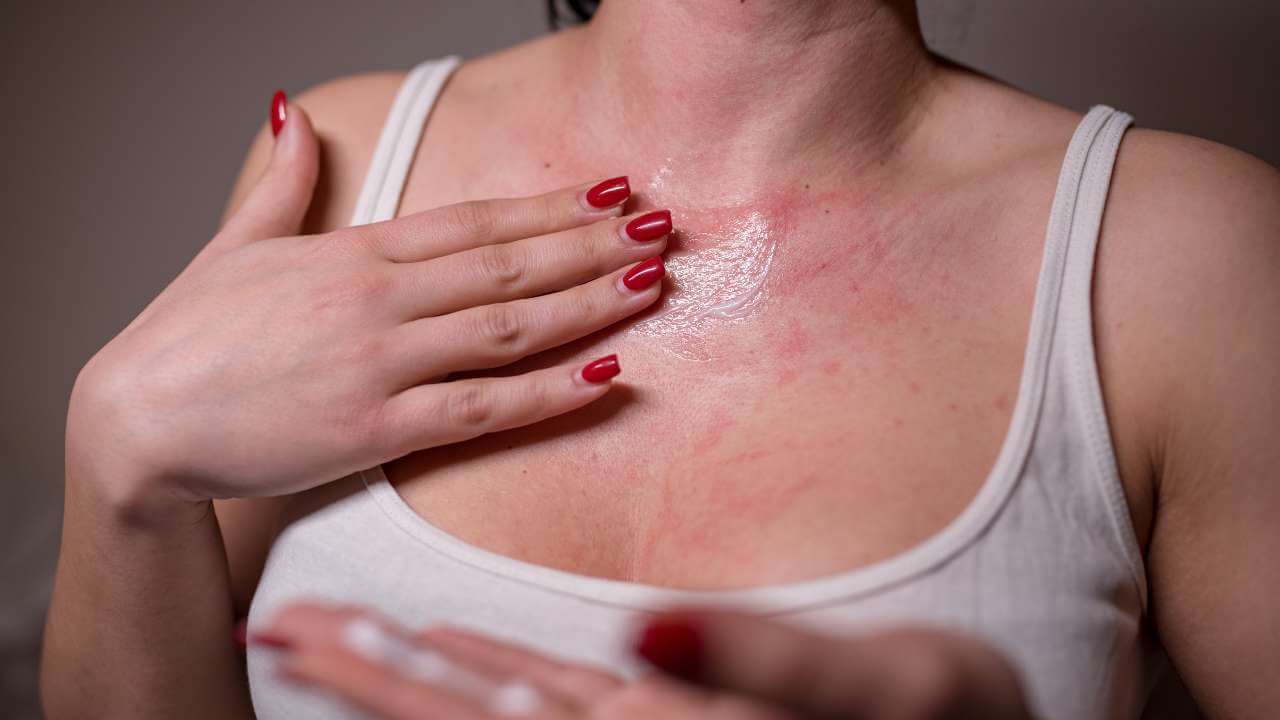
Symptoms of Chest Acne
Acne is a skin condition that can affect people of all ages and genders, and its symptoms range from mild to severe.
It commonly appears on the face, neck, shoulders, buttocks, back, and chest as:
- Whiteheads
- Blackheads
- Cysts
- Pimples
- Nodules or papules
If acne becomes too bothersome or persistent, it may be beneficial to consult with a dermatologist for treatment options. There are numerous do-it-yourself remedies and products available to self-treat mild forms of acne.
Regardless of which type of acne lesions are present on the body, you should always seek help whenever possible.
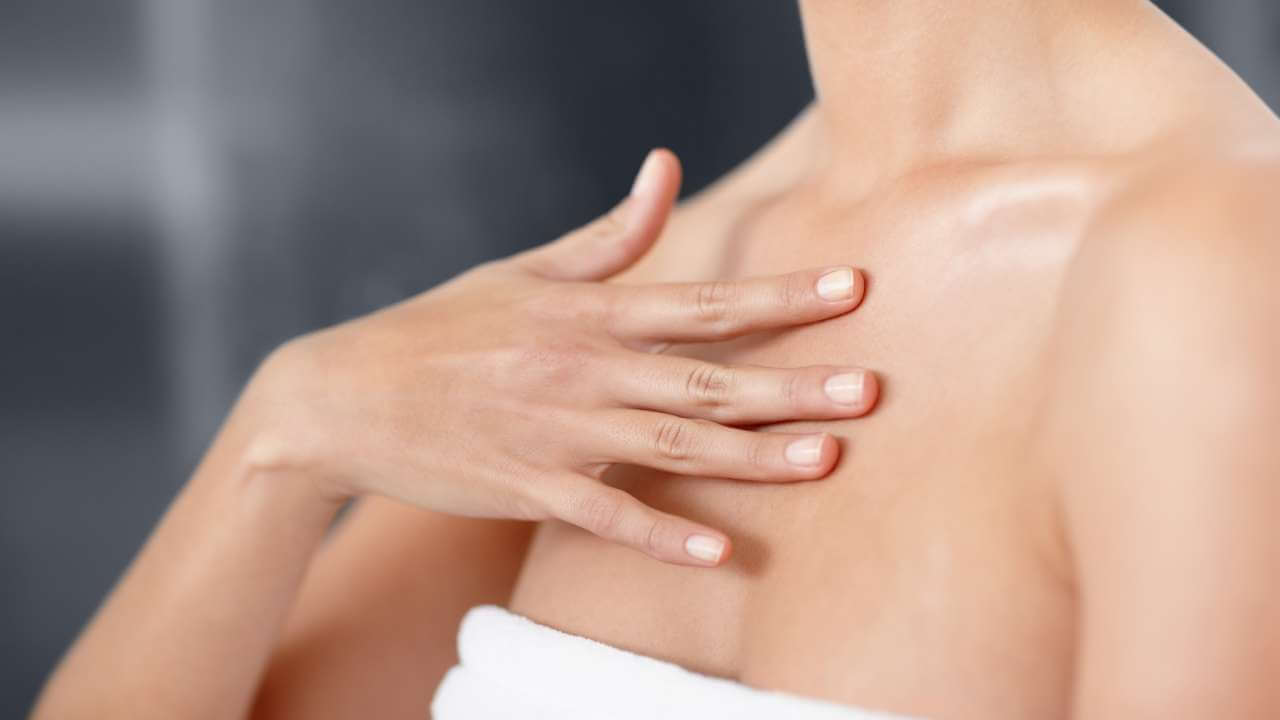
Did We Mention...
How to Get Rid of Chest Acne FAQs?
Searching for an answer to your chest acne can be overwhelming, so we have put together a compilation of frequently asked questions that will help you on your journey toward radiant skin and freedom from chest acne.
Our comprehensive solutions ensure that no matter what challenge you face in treating this common ailment, our resources are available to support you in conquering it!
Can Clogged Pores Lead to More Acne?
Yes, clogged pores can cause further irritation and inflammation of the skin, leading to more acne. This is why it is important to properly cleanse the skin and exfoliate regularly to prevent clogging pores and further breakouts.
Does Milk Aggravate Acne Breakouts?
Although certain research suggests that consuming skim milk, chocolate and foods high in carbohydrates could make acne worse, a moderate approach is recommended to limit the consumption of these items if desired by the patients.(8)
Are Oral Medications More Suitable than Topical Treatments for Chest Acne?
It depends on the severity and type of acne. For mild to moderate cases, topical treatments are usually sufficient. However, for more severe cases, oral medicines may be necessary. It is best to consult a dermatologist who can determine the best acne treatment option for your specific needs.
Is there Anything I Can do to Prevent Clogged Hair Follicles?
Yes, you can take several steps to prevent clogged hair follicles. Start by cleansing your skin regularly and gently exfoliating twice a week to remove any clogged pores and dead skin cells. Additionally, you can use oil-free products and avoid touching your face with unwashed hands to further reduce the risk.
Can Lifestyle Changes Help to Treat Acne?
To help prevent chest acne, it is vital to identify the root cause. By pinpointing what triggers your breakouts, you can take simple steps and make pertinent changes that will reduce their occurrence. By doing this, you are ensuring a smoother transition into clear skin!
To eliminate chest acne, it is recommended that you make some simple changes to your lifestyle. This includes regularly and thoroughly cleaning the area, particularly after a strenuous activity such as exercise or yard work, reducing consumption of foods with higher sugar content, not applying makeup, perfumes, or lotions directly onto the skin on your chest; wearing loose-fitting clothing when exercising and in warmer weather conditions; and using laundry detergents without dyes or fragrances.
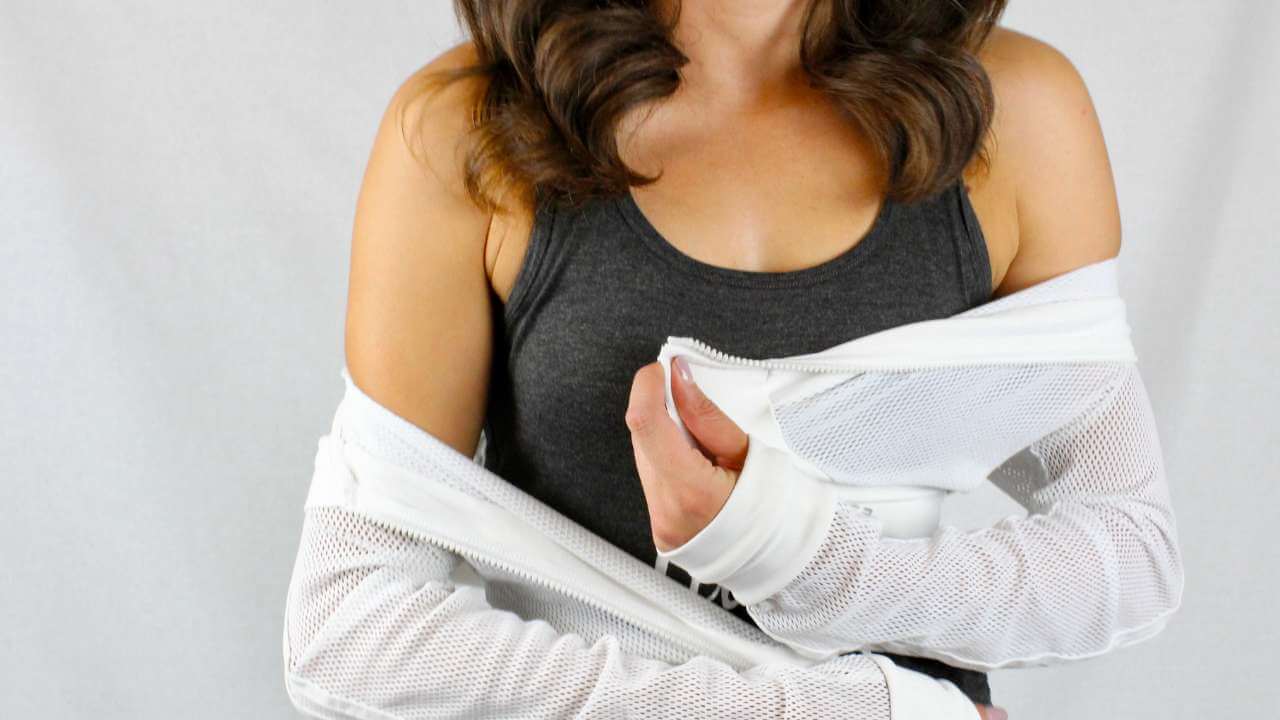
The Final Mention
Finding the perfect skin routine for chest acne can be frustrating, but ultimately it's all about understanding what is best for your body.
Following these tips and finding what works best for you will help you create the perfect skincare routine that will give you clear, healthy-looking skin, and even prevent chest acne.
Don’t forget to check in with a dermatologist if you have any concerns regarding changing up your skincare routine as well. There’s no need to stress out too much; let this definitive guide help you get on track!
So - do you have any other tips or tricks to treat chest acne? Share them with us in the comment below - we’d love to hear from you!
✅ 8 Sources
HealthMention only uses sources from authoritative and reliable resources, such as peer-reviewed studies, to strengthen the accuracy of our content.
- Matin T, Goodman MB. Benzoyl Peroxide. PubMed. Published 2020. https://www.ncbi.nlm.nih.gov/books/NBK537220/
- Lu J, Cong T, Wen X, et al. Salicylic acid treats acne vulgaris by suppressing AMPK / SREBP 1 pathway in sebocytes. Experimental Dermatology. 2019;28(7):786-794. doi:https://doi.org/10.1111/exd.13934
- Kraft J, Freiman A. Management of acne. Canadian Medical Association Journal. 2011;183(7):E430-E435. doi:https://doi.org/10.1503/cmaj.090374
- Rodrigues L, Palma L, Tavares Marques L, Bujan Varela J. Dietary water affects human skin hydration and biomechanics. Clinical, Cosmetic and Investigational Dermatology. 2015;8:413. doi:https://doi.org/10.2147/ccid.s86822
- Bagatin E, Freitas THP de, Rivitti-Machado MC, Ribeiro BM, Nunes S, Rocha MAD da. Adult female acne: a guide to clinical practice. Anais Brasileiros de Dermatologia. 2019;94(1):62-75. doi:https://doi.org/10.1590/abd1806-4841.20198203
- Nair PA, Salazar FJ. Acneiform Eruptions. PubMed. Published 2020. https://www.ncbi.nlm.nih.gov/books/NBK459207/
- Zari S, Alrahmani D. The association between stress and acne among female medical students in Jeddah, Saudi Arabia. Clinical, Cosmetic and Investigational Dermatology. 2017;Volume 10:503-506. doi:https://doi.org/10.2147/ccid.s148499
- The facts about chest acne. Mayo Clinic Health System. Accessed March 3, 2023. https://www.mayoclinichealthsystem.org/hometown-health/speaking-of-health/the-facts-about-chest-acne



